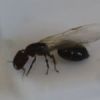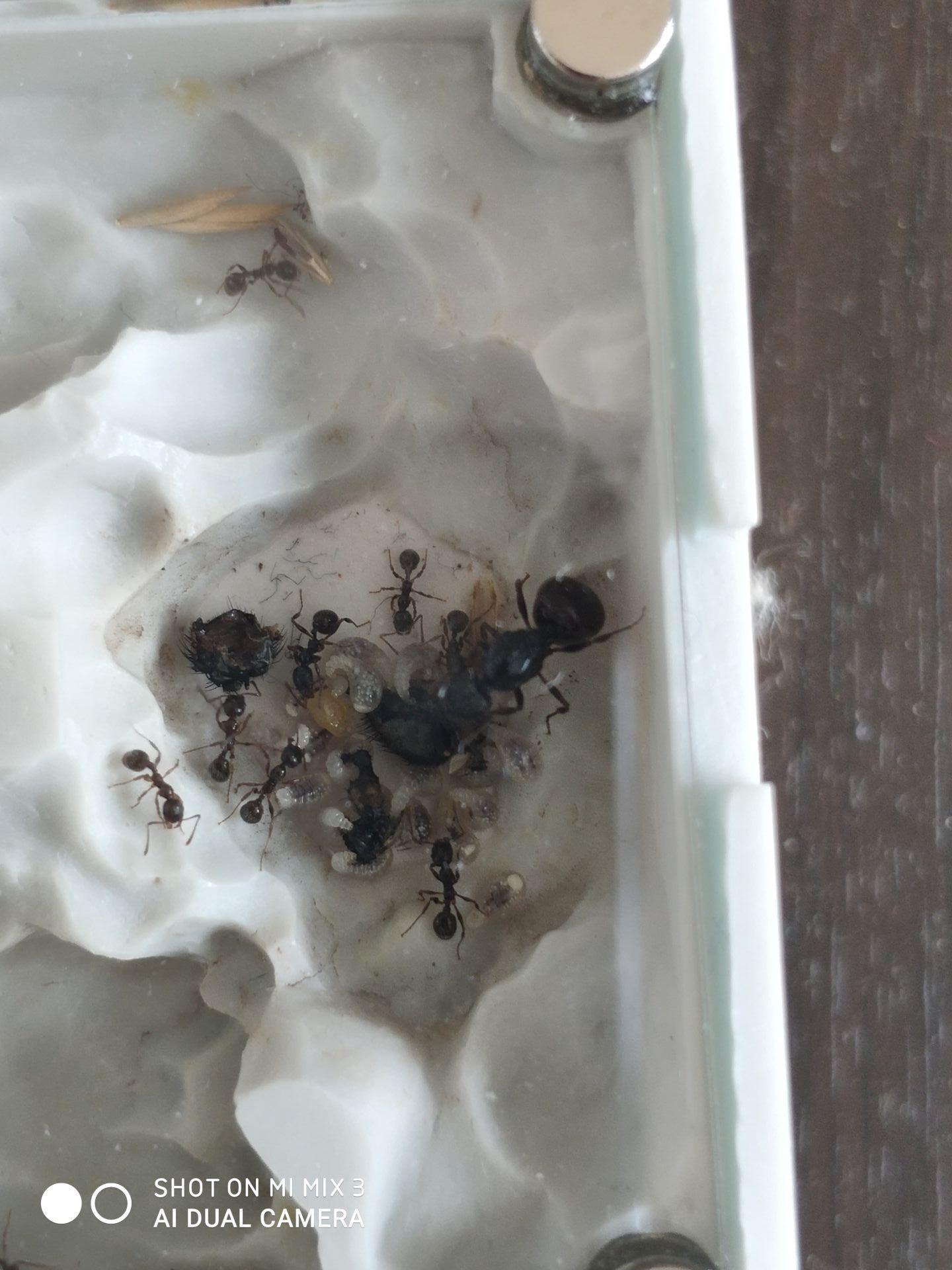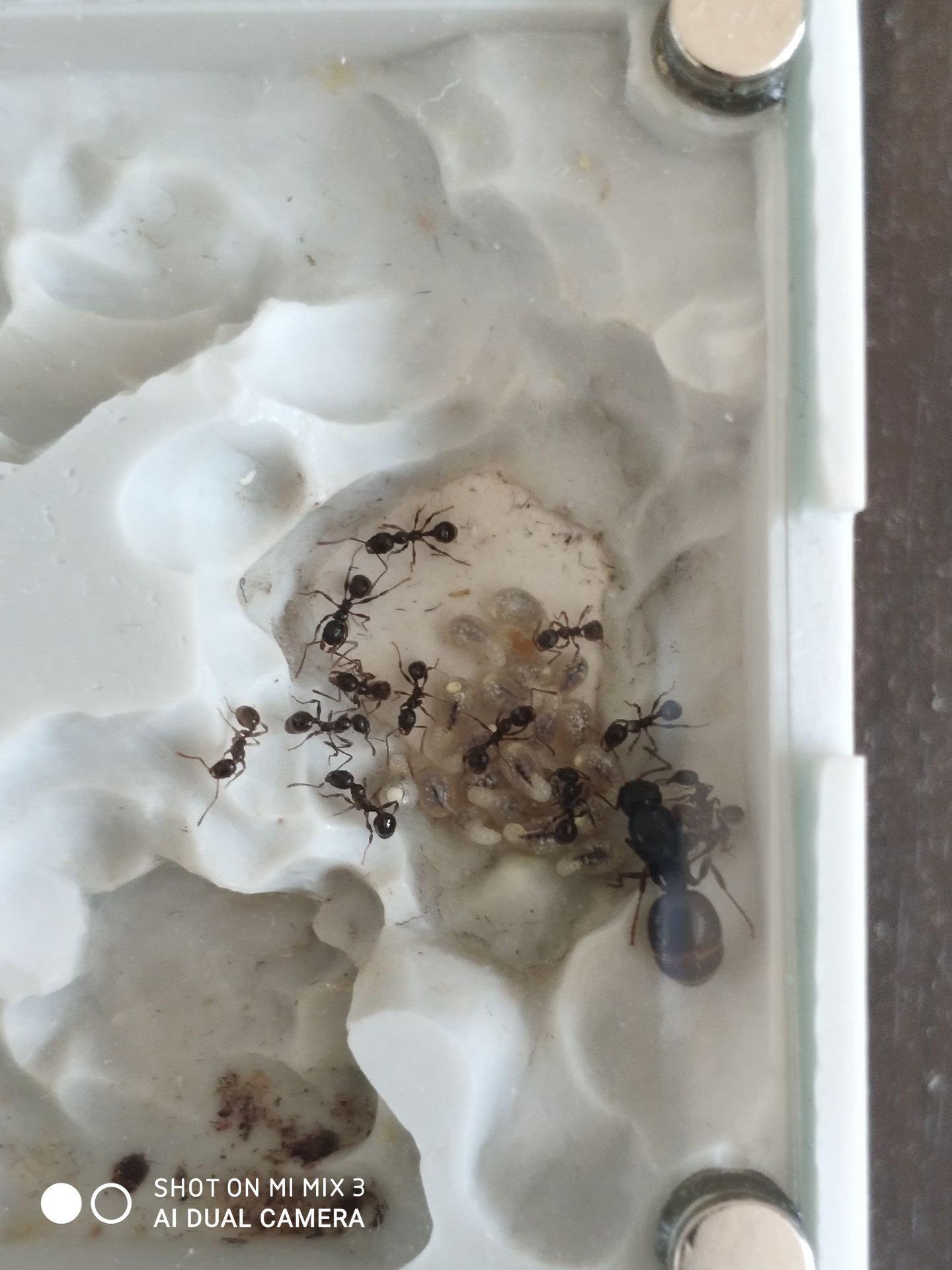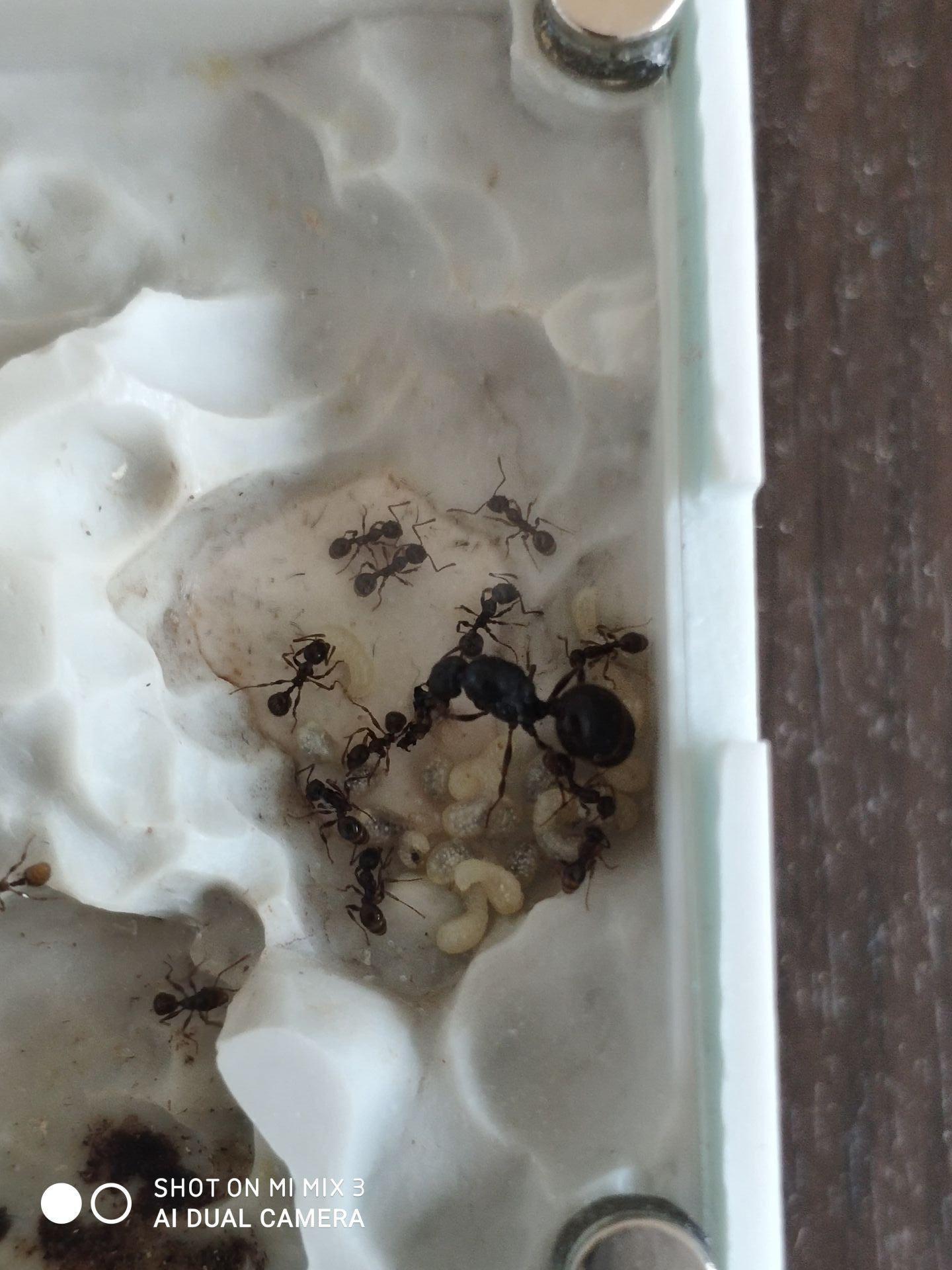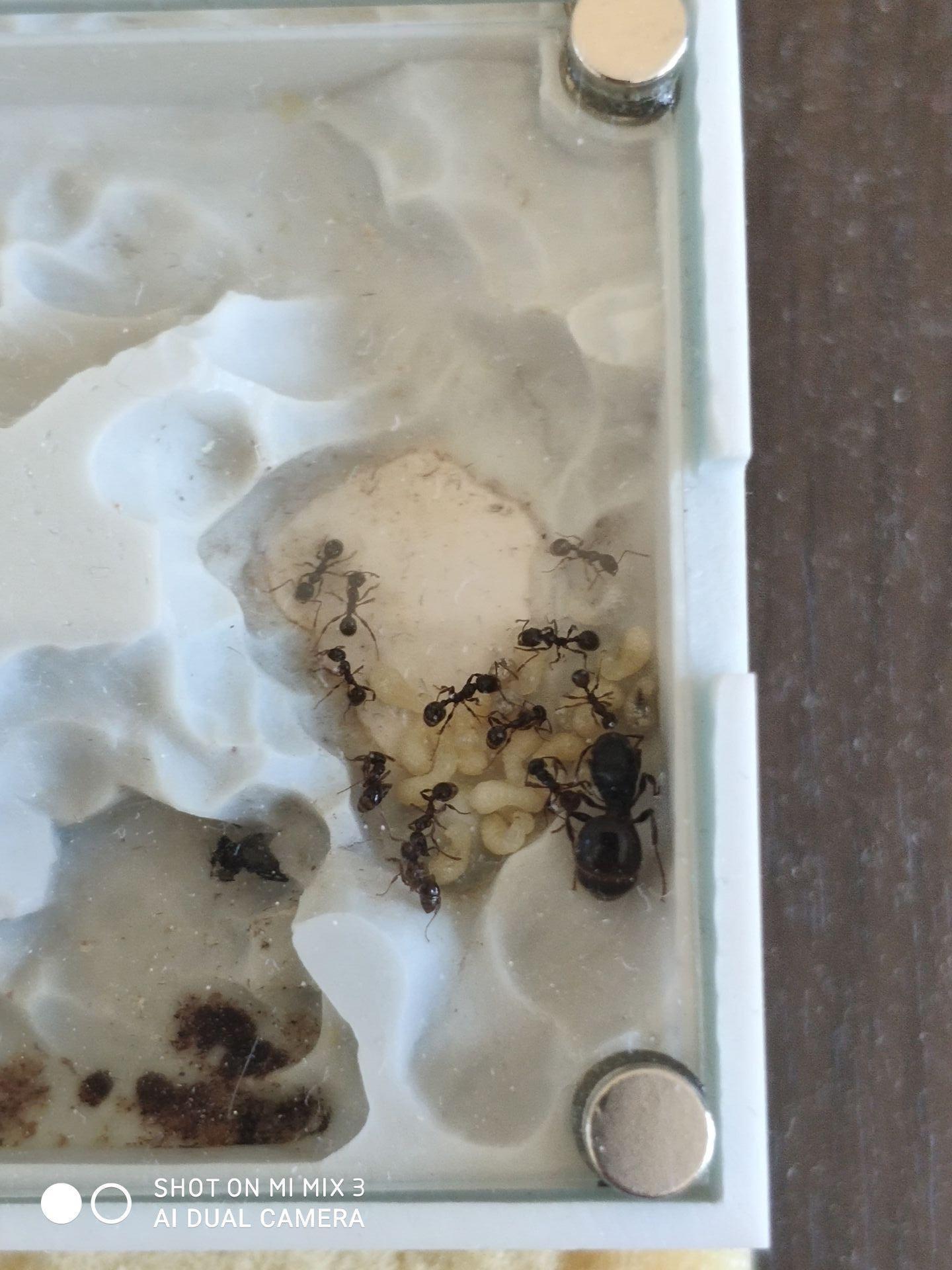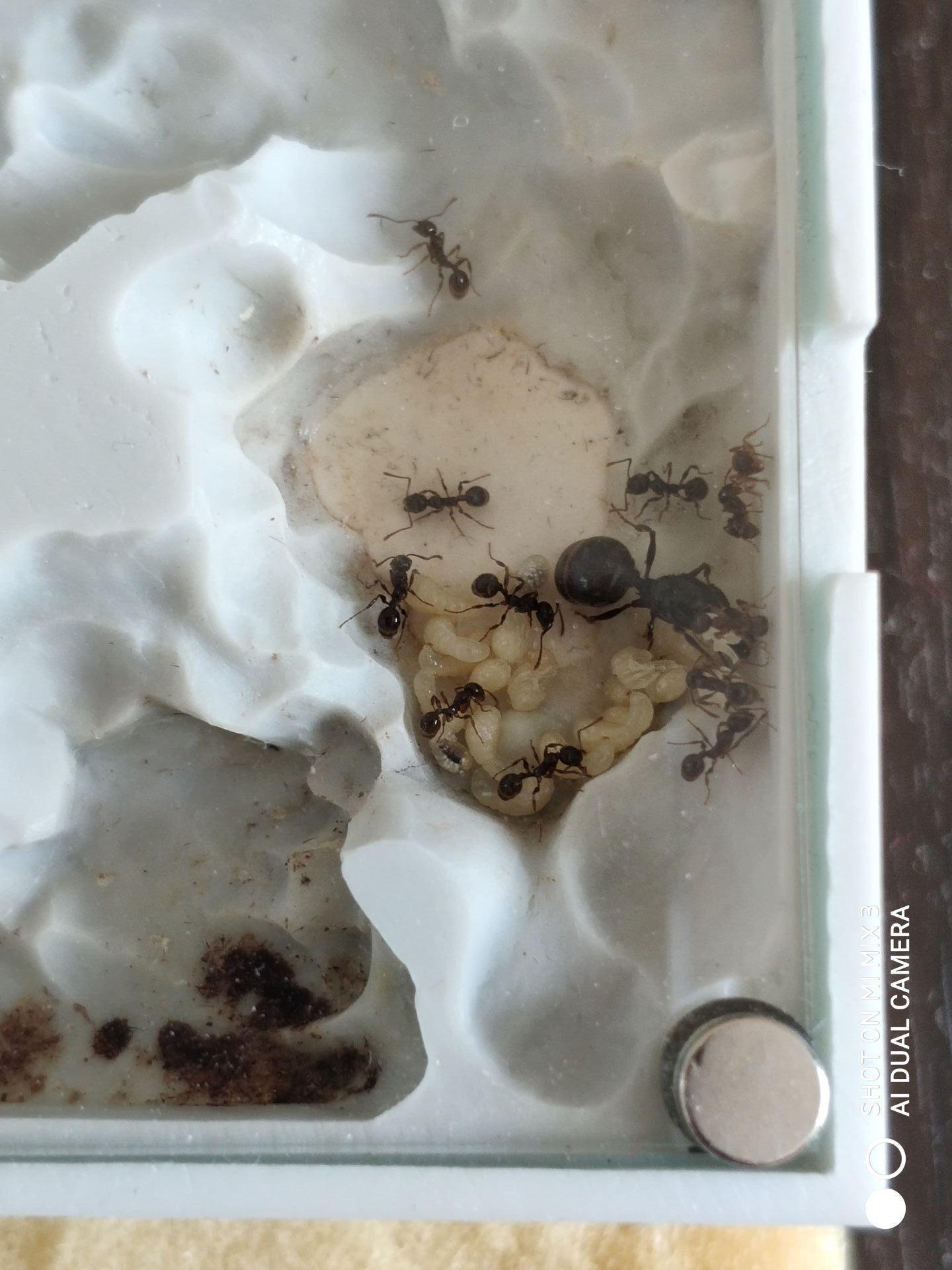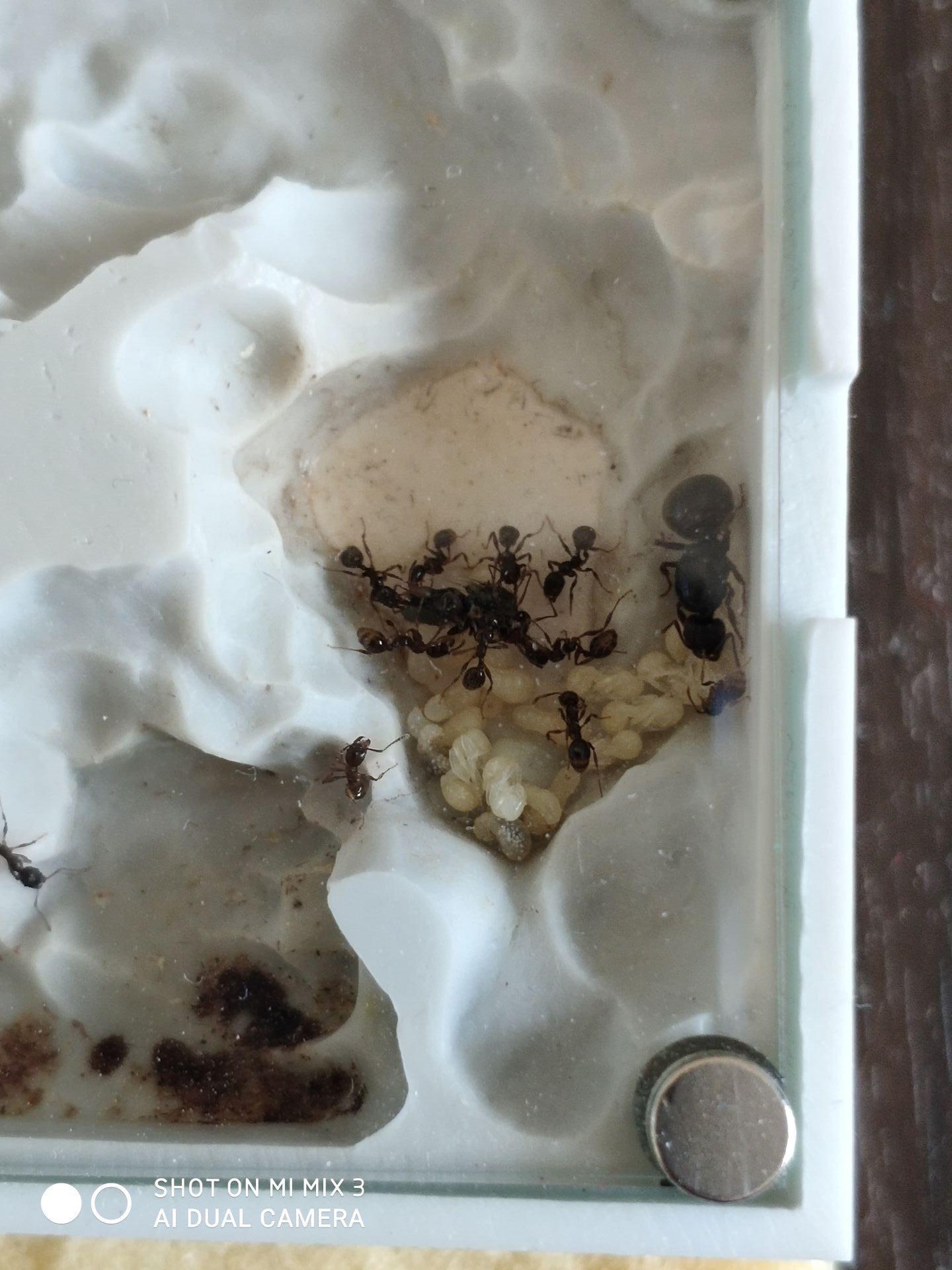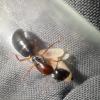Hello friends!
Starting a few weeks ago, being in quarantine and all, I payed more attention to my ants.
I had a curiously small, what I believed to be a Messor sp. queen, that I kept simply for being so small and unique.
I caught her in a huge Messor wasmanni nuptial flight, and she stood out from the rest by nothing but her noticeably smaller size.
She is around 8-9mm, where the other queens were 12-13 mm. Other than that, the colouring, bulk, shape, all seemed identical to me.
Once she got first workers, they showed interest in collecting seeds, blocking feeders with junk, nothing was amiss...at first.
I started noticing that the workers were more cautious than Messors, leaving test tube mostly by night.
The seeds weren't collected as food, but as material with which to plug the entrance to the test tube.
They dragged small flies to the brood pile to feed directly off the carcasses. The larvae are incredibly mobile, like little leaches, attaching their elongated necks to the insect, feeding. It is possible to see, with naked eye, the movements they make, as they chomp on unlucky pray.
Workers' heads seemed less bulky, elongated, and their walk and stance what less..."cramped" than in my Messors.
Also, all workers (around 10 of them at this time) are of exactly the same size.
So I took out my macro lens and spotted thorns on queen's propodeum. They were hard to spot, but they're there.
I am unsure which species it exactly is, but I think we're dealing with an Aphaenogaster sp. here.
I will provide photos later, as I don't have any sharp ones at the moment.
I will also ask you to help identify her.
Any tips on keeping Aphaenogaster? They are mostly carnivorous, right? In my observations, they weren't hot for sweet liquids...
Edited by skocko76, April 29 2020 - 5:26 AM.


